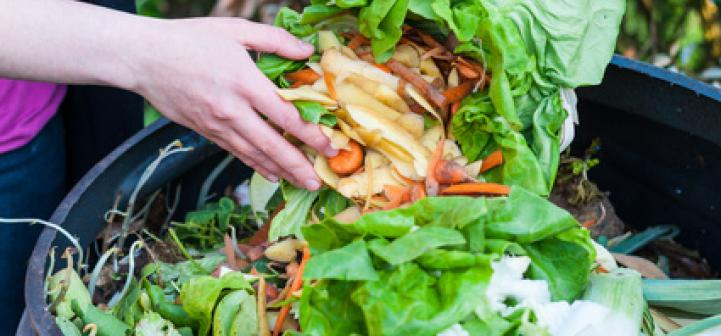
About 30% of food in the US food supply is wasted each year! That’s 133 billion pounds of food – a problem when considering hunger, limited financial resources, and environmental concerns. A study in Minnesota found that food waste was the single largest contributor to schools’ waste and that much of that waste could be rerouted for use in different ways.
Most K-12 schools can find ways to reduce food waste on their campuses, and many across the country have begun to tackle food recycling with innovative programs and partnerships! School staff or interested volunteers can contact the local solid waste department or board of health in order to help determine which recycling options are available locally or what options are feasible to start in their schools.
Feed livestock
Schools located near farms with animals could initiate relationships with local farmers or food-to-animal programs in order to see how food scraps can be used for animal feed. For example, The Five Chicago Lakes Public Schools in Minnesota send their waste to a local pig farmer! Be sure to investigate the types of foods that farmers or programs are equipped to handle. For example, many take liquids and produce or grain waste but exclude meat, and most programs will screen for contaminants that could be harmful to animals.
Generate fuel
Used fats, oils, and grease can be used to make biodiesel – a renewable fuel source for diesel engines. Dallas County Schools and the City of Dallas, Texas have partnered to create a grease recycling program in which waste vegetable oil is collected by the school from a variety of sources and donated to a plant that cleans and processes the oil into biofuel. In turn, the fuel is used to run their green school bus affectionately known as the Fryer Flyer!
Contact a local biodiesel club or manufacturer to see if they are willing to accept used oils. Nearby rendering facilities often provide storage barrels and pick-up services. Schools can use this as an opportunity to collaborate with local businesses and other school systems to maximize collection efforts and strengthen community connections.
Create Compost
Schools across the nation have had success composting food waste, often for the benefit of a school garden or landscaping needs, but also to assist food scrap projects or in partnership with local composting organizations. Beyond reducing landfill waste and generating a useful product, such programs can save money, build community, and serve as an opportunity to complement school science curricula. The bottom line: the benefits of composting outweigh the concerns!
From gathering support, to developing a plan for composting infrastructure, and evaluating your efforts, several resources are available to help outline the steps necessary for establishing and maintaining a successful composting program for cafeteria food scraps! See our list below for composting and other school food recycling information!
Contributors
Alisha Gaines, PhD, Division of Nutritional Sciences, Cornell University
Eli Weiner, Cornell University
References and Resources
Cuyahoga County, Ohio Solid Waste Management District School Composting Case Studies
Dallas County Schools Green Bus Project
Feeding Hungry Tummies: Lunch Hour Strategies to Curb Food Waste
Implementing Successful School Recycling Programs: A Handbook for Teachers and Schools
Massachusetts Department of Environmental Protection The Green Team program
School Compositing…the Next Step in Recycling: A Manual for Connecticut Schools
US Food Waste Challenge Overview to K-12 Schools
USDA Webinars for K-12 Schools Reducing, Recovering, and Recycling Food Waste
